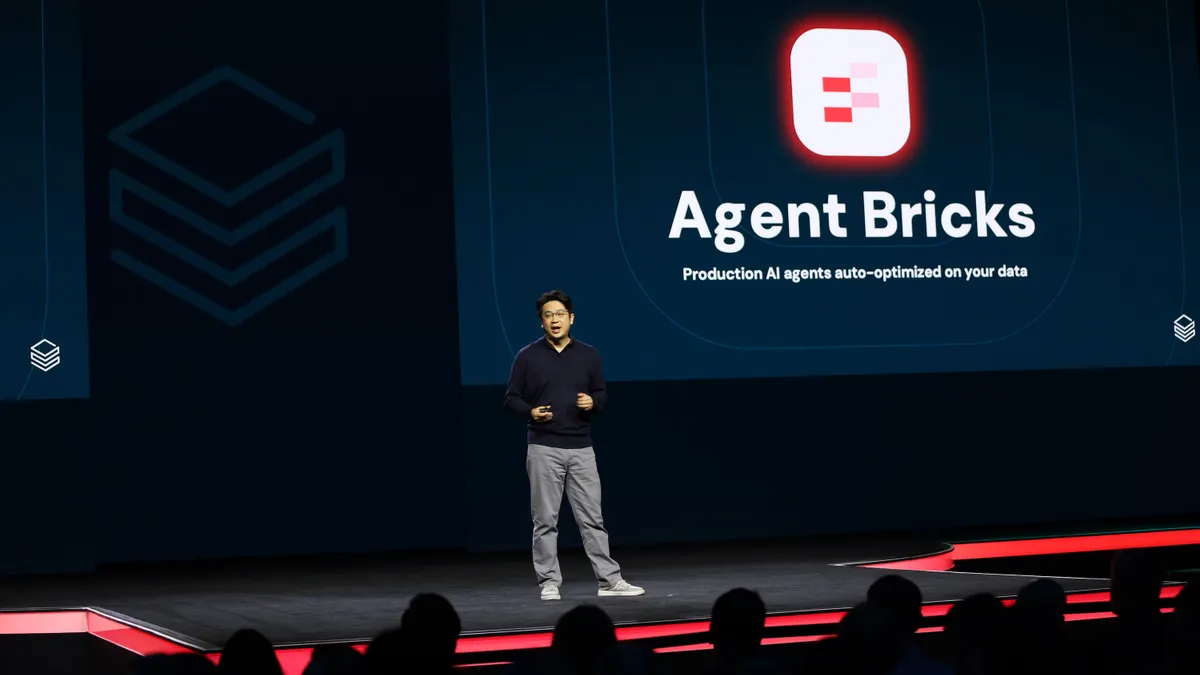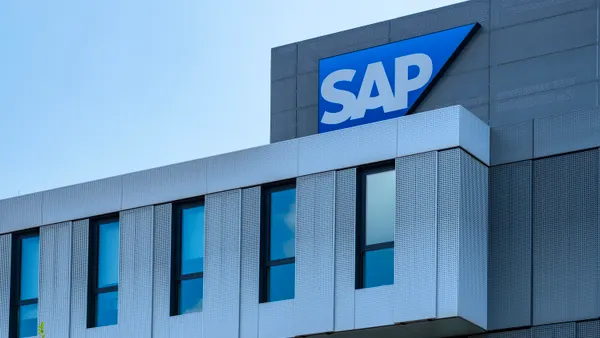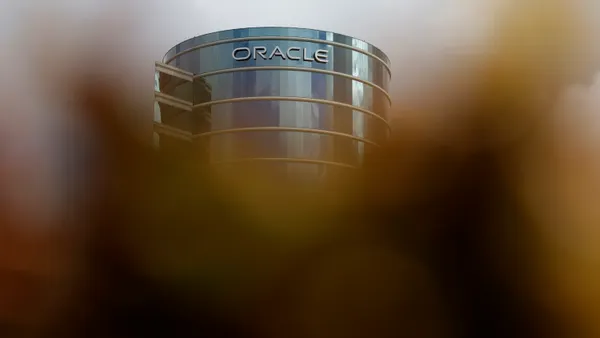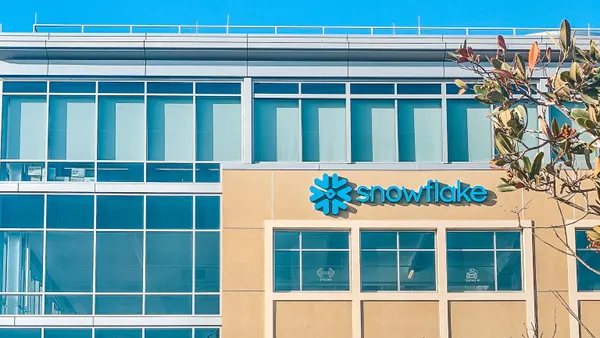Databricks added agent-building capabilities and a no-code data pipeline tool to its enterprise AI portfolio Wednesday. The data and AI company also expanded cloud partnerships with Microsoft and Google Cloud last week during its annual Data + AI Summit in San Francisco.
Customers can use Agent Bricks, currently available in beta, to prepare emails, PDFs, manuals and other unstructured data for model ingestion, power a knowledge-assistant chatbot, orchestrate multi-agent applications and customize chatbots and content creation tools, according to the announcement. The no-code Lakeflow Designer studio will be available in private preview, the company said in a separate release.
“We’re expanding the capabilities of our core audience — the engineer — and we're also expanding the ability of everybody else to play in this game as well,” Bilal Aslam, senior director of product management at Databricks, told CIO Dive. “This means bringing together structured data from enterprise applications like Salesforce, Workday and NetSuite with PDFs from SharePoint and Google Docs.”
As enterprises grapple with data management hurdles on the road to AI adoption, vendors are stepping in to ease multisource integrations and provide off-the-shelf, task-focused agentic tools. In the race to tear down data silos, walls between providers are crumbling too.
Snowflake — a Databricks competitor in the data cloud space — connected its Cortex AI platform to Microsoft Azure OpenAI Service in Azure AI Foundry as part of its partnership with the hyperscaler in February. The company leaned on an alliance with Anthropic to launch agentic capabilities powered by the model builder’s Claude 3.5 Sonnet in February, as well.
Databricks and Microsoft added several years to their strategic partnership built around the joint Azure Databricks analytics platform, launched in 2018. The expansions include cloud-native integrations with Azure AI Foundry and Microsoft Power platforms and plans to deploy the Databricks’ ERP-based integration SAP Databricks on Azure later this year.
“We are delivering significant value to enterprise and IT developers by enabling tighter integration across the Azure ecosystem — from Azure AI Foundry and Power Platform to SAP,” Judson Althoff, EVP and chief commercial officer at Microsoft, said in the announcement.
The Google Cloud alliance, which dates back to 2021, brings the hyperscaler’s Gemini large language models into the Databricks ecosystem. Customers can access the models through SQL queries and secure endpoints and pay for Gemini through their Databricks contract, according to the companies.
Databricks also indirectly bolstered an existing AI pact with Salesforce through an expansion of its Informatica partnership. Informatica, which Salesforce agreed to purchase for $8 billion last month, helped launch the Managed Iceberg Tables data conversion tool and Databricks Lakebase PostgreSQL-compatible database into public preview last week, the two companies said in a Thursday announcement.
Databricks moved to acquire the Postgres startup Neon in May, only weeks before Snowflake agreed to acquire Crunchy Data, a similarly positioned data-service provider.
The web of cross-platform integrations and acquisitions reflects an eagerness among enterprises to untangle data estates and power up reliable generative AI capabilities.
“Most of our customers did not have high quality ways to evaluate AI agents,” Hanlin Tang, CTO of neural networks at Databricks, told CIO Dive. “Customers were building agents that would recommend a competitor’s products or hallucinate a description for a product that didn’t exist.”














